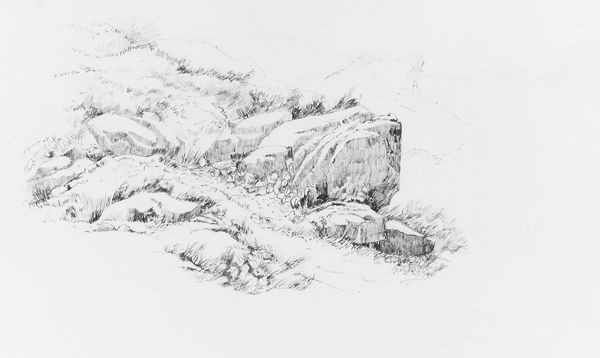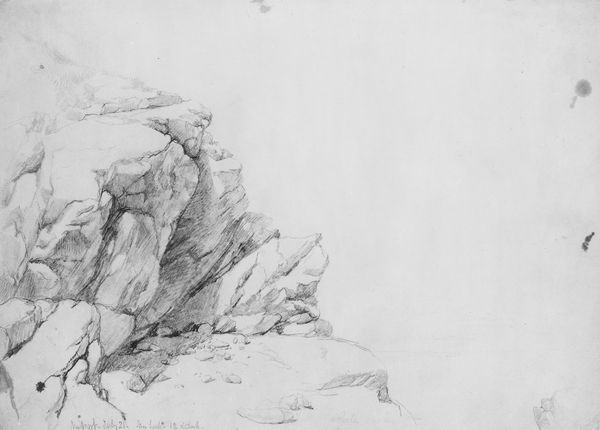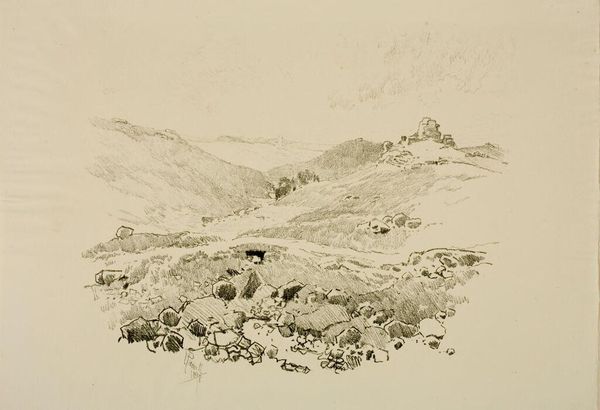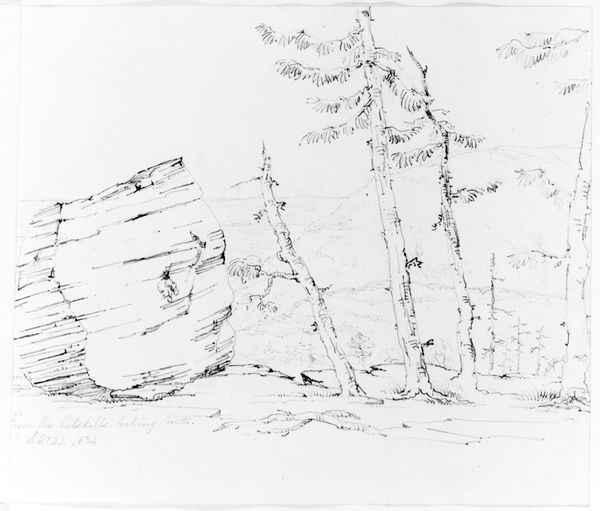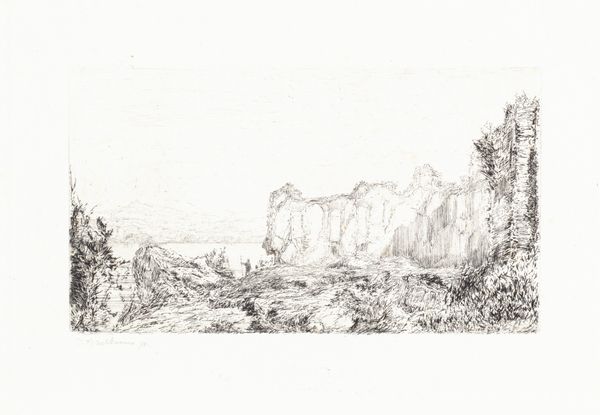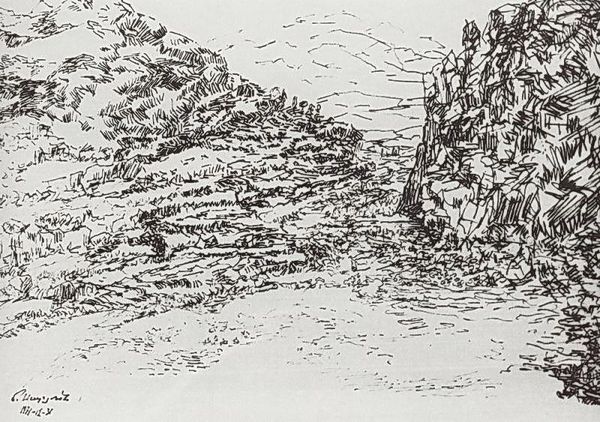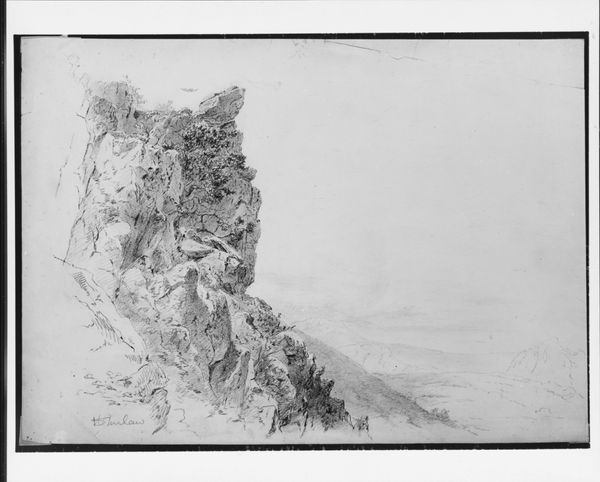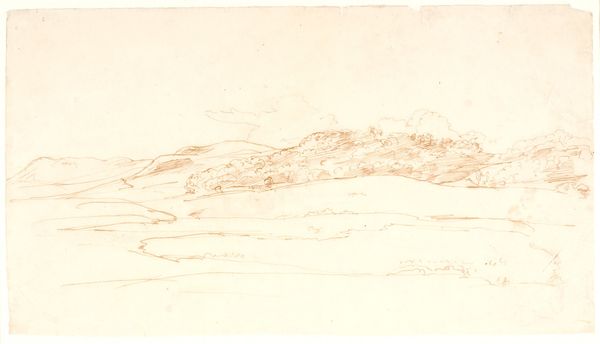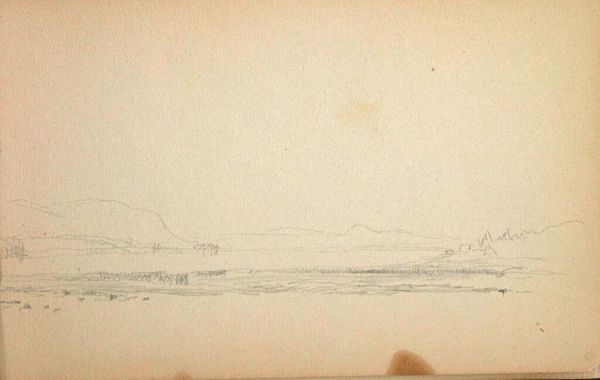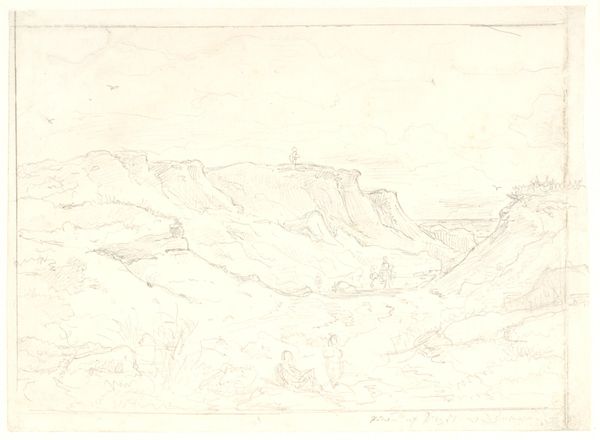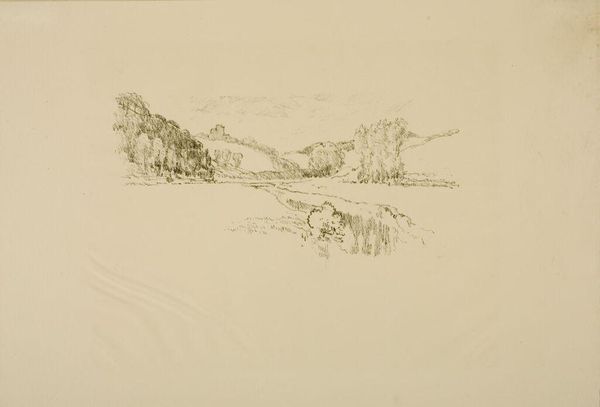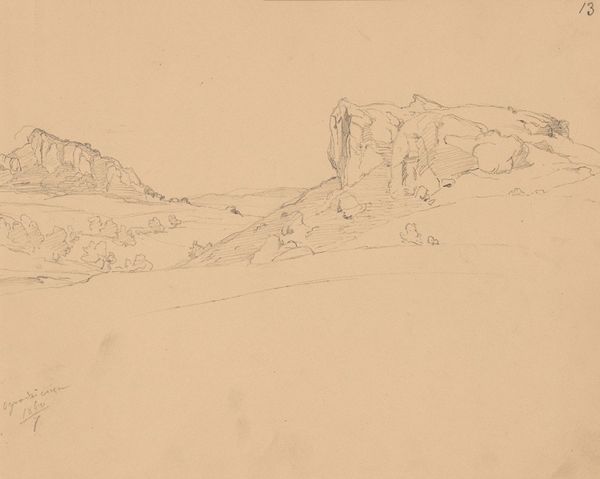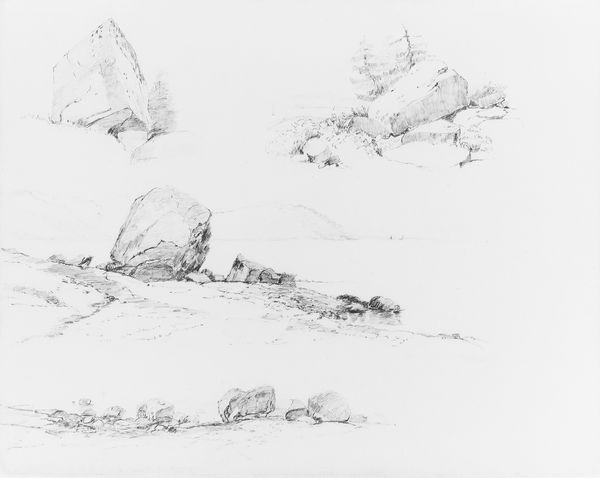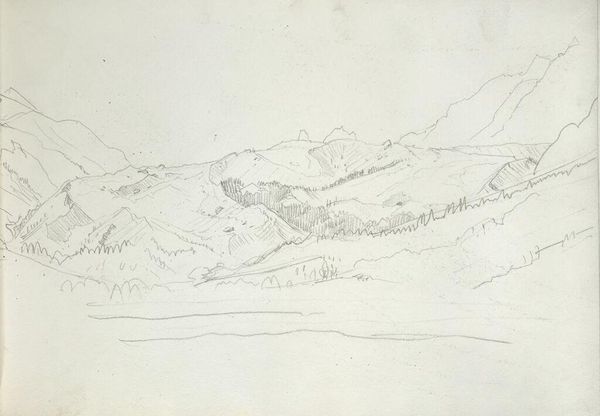
Ruin i forgrunden af landskab med akvædukt (Claudius' akvædukt, Monte Cavo i baggrunden). 1730 - 1786
0:00
0:00
drawing
#
drawing
#
neoclacissism
#
landscape
#
history-painting
Dimensions: 245 mm (height) x 362 mm (width) (bladmaal)
Editor: This is "Ruin i forgrunden af landskab med akvædukt (Claudius' akvædukt, Monte Cavo i baggrunden)" – roughly translated, Ruins in the foreground of a landscape with aqueduct – a drawing by Johan Mandelberg, sometime between 1730 and 1786. It feels quite stark and yet, also delicate in its rendering. What do you see in this piece? Curator: The drawing meticulously details the aqueduct's ruin, emphasizing the physical degradation of what was once a monument to Roman engineering and labor. Mandelberg focuses our attention on the materials: the individual stones, the way they’ve weathered, the evidence of their assembly and subsequent decay. How does this ruin embody, for you, a specific history of production and consumption? Editor: I suppose I hadn’t thought of it in terms of "consumption" exactly, but it makes sense. The aqueduct was built to serve a purpose, to bring water, and now it is crumbling. So, you’re seeing it less as a romantic ruin and more as evidence of… used materials? Curator: Precisely. And further, I think it raises questions about artistic labor. Mandelberg has clearly invested significant time and skill in depicting this ruin. What does it mean to painstakingly reproduce an image of something falling apart? Is he elevating the craft of drawing itself, perhaps suggesting it’s a more enduring “product” than the aqueduct ever was? Consider how his labor contributes to the ongoing "life" and meaning of the ruin itself. Editor: So it's not just about the subject being depicted, but also the process of its depiction? Curator: Exactly. Think about the social context too: who commissioned works like these? Who consumed them? The answers reveal a lot about power, patronage, and the role of art within the society of the time. Editor: That’s fascinating. I will never look at a "simple" drawing again. There’s a lot more happening than I initially thought. Curator: Indeed. And remember that the material reality of the artwork—the paper, the pencil, the artist's hand—are all vital components of its meaning.
Comments
No comments
Be the first to comment and join the conversation on the ultimate creative platform.
